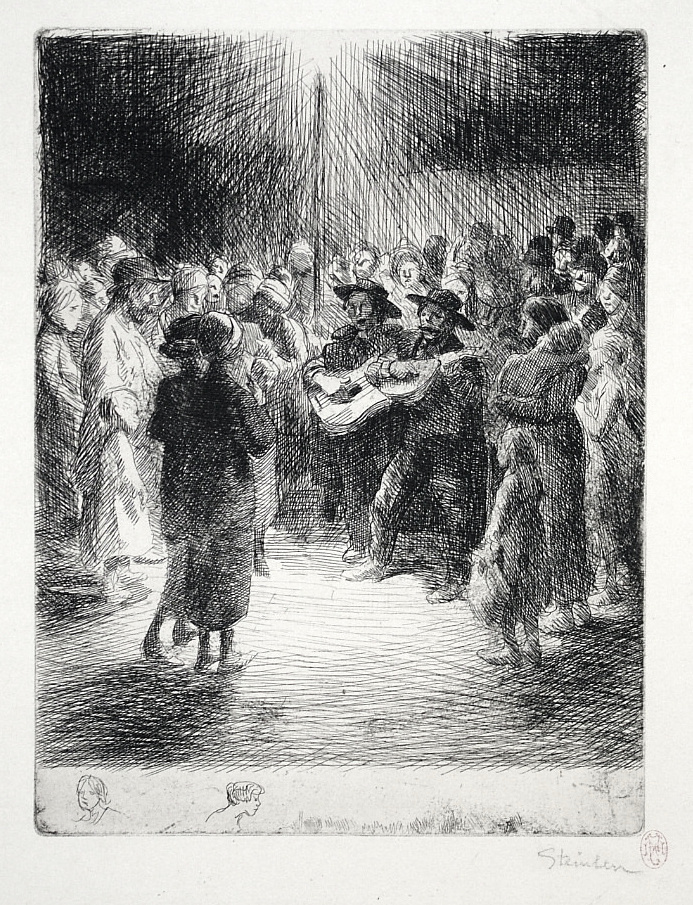Chanson du Soir
Theophile Alexandre Steinlen (1859-1923), Chanson du Soir, etching, c. 1913, signed in pencil lower right. Not in Crauzat (but see below) in excellent condition, printed on a cream laid Arches paper (with a partial watermark), 11 3/4 x 6, the sheet 12 3/4 x 9 3/4 inches.
Provenance: ex Collection: Forgues, Eugène Daurand (1857-1933) Premier Président de la Cour d’Appel, Paris, with his stamp recto lower right margin (Lugt 743a)
A fine strong impression of this rare print; the print is known is several versions and states; this is an early state, after the first state but before larger unsigned editions (see discussion below).
Street singers were a favorite theme of Steinlen; this impression is related in composition and subject matter to the etchings Les Petites Chanteurs Des Rues (Crauzat 47) and Les Grands Chanteurs Des Rues (Crauzat 46), as well as a lithograph done in 1895 called Chanteurs Des Rues which was the cover sheet for Chansons de Montmartre, a volume of lithograhs featuring the songs of Paul Delmet.
We know of another impression of this print (sold at Swann Gallery, 2010), which had one remarque, and with the bottom margin clean. In our impression there are two remarques in the bottom margin area, as well as a number of stray or “test” drypoint or etching lines; moreover, our impression is much darker due to extensive cross-hatching of the figures in the crowd, the musicians, and the two women with their backs to us.
After listing this print I received this very helpful note from Tim Hanford, who is listing Steinlen prints on the internet at www.steinlen.net. I’m indebted to Tim for this information, and more broadly for the excellent work he’s doing to add to our knowledge of this wonderful artist.:
Harris, The Steinlen etching you have listed recently as “Chanteurs des Rues” is actually titled “Chanson du Soir.” [note: this has been revised] It was included in the Crauzat book as an hors texte original etching (on page 1 and noted on page 219), although it is not listed in the etchings portion of the book. There are several versions of the etching. I think some of the alternate versions may have been included with the 25 “de tete” copies of the Crauzat book, but I have not been able to verify that.
I have the one I have called “first state” (faint lines, no remarque), the unsigned version with two remarques, the final version (loose on Japon), a copy of the final version as bound in Crauzat, and the version from the Gazette des Beaux Arts.
I hope you find this information helpful.
Tim Hanford
